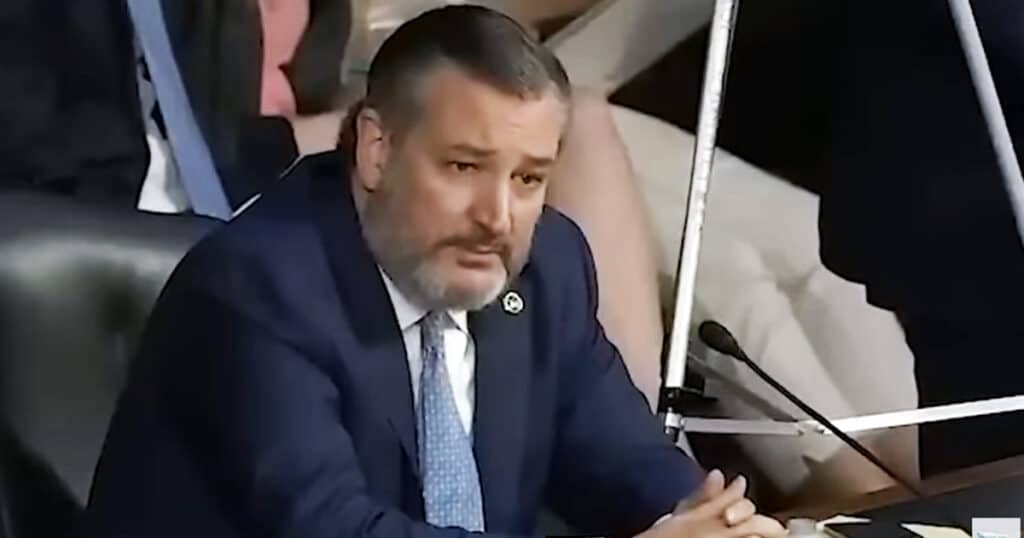
Could Ted Cruz Lose Reelection?
The early conventional wisdom appears to be that Sen. Ted Cruz is in solid shape for reelection in 2024. Cook’s Political Report rates the race as “Likely R,” as does Larry Sabato’s Crystal Ball. Inside Elections is more circumspect, labeling the race as a “battleground,” although Inside Elections currently only labels races as “safe” or “battleground.”
This is probably overly optimistic for Cruz (or, if you prefer, pessimistic for his eventual Democratic opponent). To start, we have to understand how the politics of Texas have shifted over the course of the past decade. As I’ve noted here before, when someone thinks about Texas, they tend to think of tumbleweeds, cowboys, and Longhorn cattle. To be sure, there is an awful lot of that in Texas. The issue, however, is that not many Texans live in tumbleweed counties.
Instead, Texas is in many ways one giant suburb. Dallas has a surprisingly small downtown area for a city that forms the core of the nation’s fourth largest metropolitan area. The “metroplex” is less densely populated than Louisville, Kentucky, and Buffalo, New York. The city itself isn’t even in the top 100 U.S. cities by population density. In fact, no city in all of Texas falls into the top 100.
This yielded benefits for Republicans at a time when the GOP was the party of white suburbanites. It is part of why Texas shifted to the Republican Party relatively early and quickly (in the 1960s), and it is partly why its dominance lasted as long as it did. It’s also a large part of why, until fairly recently, the idea of Blue Texas seemed like a recurring Democratic fever dream. Yes, Hispanic population growth was happening, but it would take a long time before that growth could hope to overwhelm Republican dominance of Texas.
But with suburbanites across the South abruptly shifting their voting patterns in the late 2010s and beginning to vote like their northern peers, the cost/benefit calculus for the GOP shifted abruptly. What once disproportionately helped the GOP in a state like Texas now hurt it disproportionately. Hence, the state shifted from one that Mitt Romney carried by 16 percentage points while losing nationally by four points, to one that Donald Trump carried by just five and a half points while losing by four nationally.
This provides us with something of a baseline expectation to measure from. From there, the likely result depends upon your assumptions. If you think the suburbs will continue to shift against the Republicans in 2024, Texas could be a highly competitive state. This is very possible.
At the same time, if suburban votes continue to shift against the GOP at the same rate they did from 2012 to 2020, by the year 2100 the GOP would almost receive negative vote shares on those communities. Trends continue until they don’t; the trick is understanding when they will stop. At a certain point, you run into evangelical suburbanites, fiscally conservative suburbanites, and suburbanites whose partisan identity overrides their policy identity (in much the same way that, at some point, Republican gains among whites without college degrees become stymied by running into baristas and current college students).
We don’t really know where that line is, but that uncertainty is just the point. We can’t say for certain that Cruz will win, but the real possibility that white suburbanites could shift further toward the Democrats, which would impact Cruz’s chances disproportionately, is a sword of Damocles hanging over Cruz’s head.
Three final points are worth keeping in mind. First, Ted Cruz is still Ted Cruz. The two-term senator has never been terribly well-liked, even among members of his own party. He’s loathed by the left, which guarantees that his opponent will be well-funded and that the media will give coverage to that opponent. He is still the same man who came very close in 2018 to becoming the first Republican to lose a statewide race in Texas in two decades.
Yes, John Cornyn won by almost 10 points in 2020, but that margin was down by double digits from his 2014 showing. Yes, Beto O’Rourke was a media darling, and yes, it was a horrible GOP environment. The point is, Cruz doesn’t have much of a margin of error.
Second, his likely opponent, Colin Allred, is a charismatic former Baylor football standout/NFL player-turned civil rights attorney. As mentioned above, he will almost certainly not hurt for money. And as also mentioned above, there will be a push to try to make him into Beto 2.0 (ignoring O’Rourke’s ill-fated presidential and gubernatorial runs). Most importantly, Allred has demonstrated that he can win in the suburbs, which is the key in Texas.
Finally, we can’t ignore Donald Trump. As of this writing, Trump remains the clear favorite for the GOP nomination, and is running well against Joe Biden in the polls. At the same time, to say there are storm clouds on the horizon is an understatement. Trump may well be running for the presidency with a criminal conviction hanging over his head. The U.S. economy may be going full speed ahead in 2024, making it difficult for any challenger to win. There are any number of other potential missteps at the top of the ticket.
Which is to say that this may well be another 2018 environment for Cruz. Given the shifts in Texas over the past four years, he seems unlikely to survive such an environment.
Regardless, Cruz definitely can win this election. But, unlike most other Texas races, his fate is in many ways out of his hands. There are enough things that could go wrong for him that the race should be considered genuinely competitive at this point.
This article was originally published by RealClearPolitics and made available via RealClearWire.



